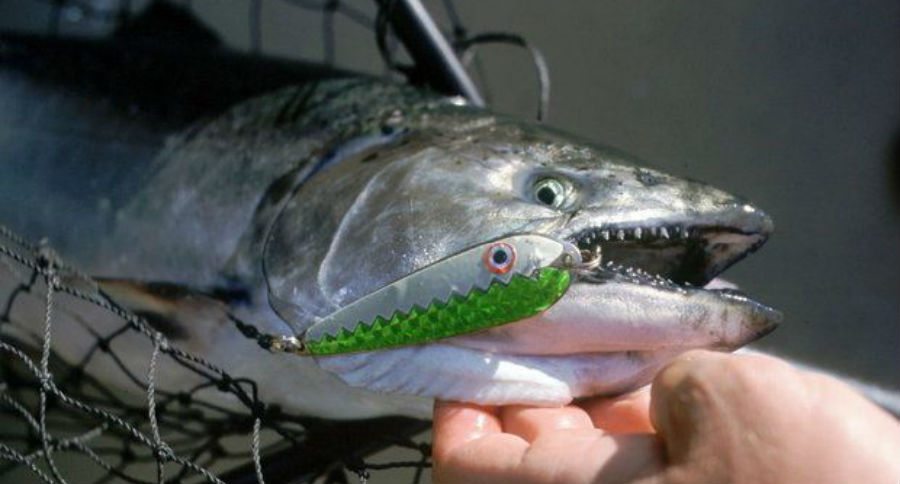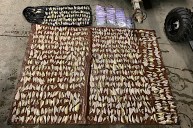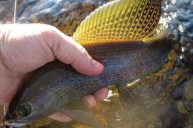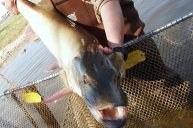Michigan and Wisconsin fishermen and women should keep an eye out for signs of tagged fish. Each state's DNR needs your help and participation.
Michigan and Wisconsin are once again asking anglers to be on the lookout for Great Lakes fish with missing adipose fins. Missing adipose fins signify tagged fish and the Department of Natural Resources is asking anglers to turn in the snouts of these fish.
The fish are embedded with coded wire tags (CWTs). The small tags are etched with a binary code and injected into the fish's snouts when they are fingerlings, and their adipose fins are removed to identify them as tagged fish. The adipose fin is the small, fleshy fin on the fish's back, between the dorsal and tail fins.
If you catch a salmon or trout with a missing adipose, the DNR is asking you to save the fish's snout. You can remove the snout by cutting just behind the eyes and dropping the snout off at one of the designated locations.
- Click here for a statewide Michigan list of drop off points.
- Click here for a Wisconsin list of DNR offices where you can drop off fish snouts.
- Click here for a list of Wisconsin participating businesses where you can drop off fish snouts.
Once the fish snouts are back at DNR laboratories the CWTs are removed and the information from the tag is recovered, recorded and analyzed.
The information gathered from these tagged fish helps the DNR formulate their stocking numbers, figure out how much natural reproduction is taking place in Great Lakes tributaries, track fish movements throughout the lakes and more.
"We rely heavily on Michigan's anglers to return tagged fish and are appreciative of their cooperation," said Randy Claramunt, the Michigan DNR's Lake Huron Basin coordinator. "Participating in the DNR's mass marking effort allows us to learn more about the state's fish species so we may manage them more effectively in the future."
Each state asks you to download and complete a short form and turn it in with each fish snout you drop off.
- To download Michigan's form click here.
- To download Wisconsin's form click here.
To learn more about each state's cooperative fish tagging program click the following links for each state:
Like what you see here? You can read more great articles by David Smith at his facebook page, Stumpjack Outdoors.
NEXT: 5 Charts That Explain the Differences Between Trout and Salmon




